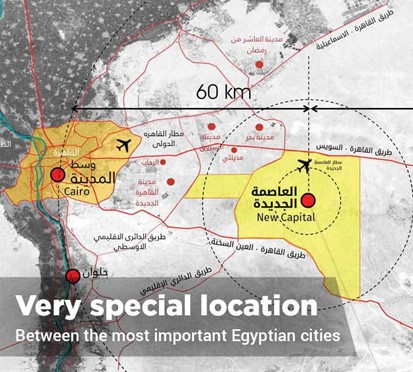
The New Administrative Capital (NAC), 45 km east of Cairo, covers 700 km² (the size of Singapore) and will be home to 6–7 million people. The project (announced in 2015) aims to decongest Cairo and create an administrative, economic, cultural, and residential hub.

- Structuring components
- Key districts: governmental (ministries, Parliament, presidential palace), business (CBD, Iconic Tower 394 m), cultural (opera, mosques), residential, and a 35 km linear park called “Green River”
- Strong infrastructure: monorail connected to Cairo (opening imminent), highways, airport, and eco-urban parks.
- Issues and impacts
- Urban decongestion: Cairo (22 million inhabitants) was saturated.
- Modernization and attractiveness: smart city, technologies, surveillance (6,000 cameras), AI, and numerous services.
- Economic dynamics: in phase 1, 14 ministries already moved (2023–2024), gradual relocation planned, mixed public-private financing, mainly Chinese.
- Challenges and criticisms
- High cost($45–58 billion), debt financing, concerns about inequality.
- Quality of life: few jobs for the middle classes, daily transport to be provided from Cairo.
Risk of a “white exodus”: risk of creating a separate, rich world, far from the socio-economic challenges of Cairo.



